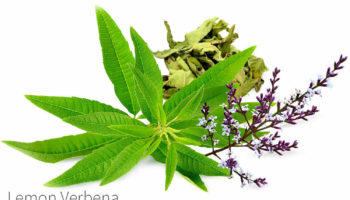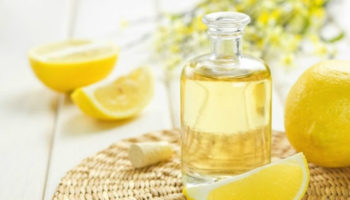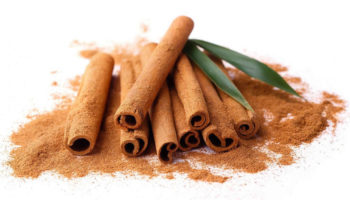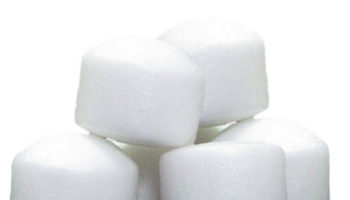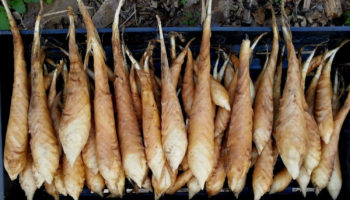What is snake gourd
Snake gourd (Trichosanthes cucumerina Linn.) commonly named as viper gourd, snake tomato, long tomato, padval or serpent, is long and curved fruit. The fruit is usually consumed as a vegetable due to its high nutritional value. Snake gourd fruit is usually divided into two different categories. There are the extremely long varieties that are grown for ornamental purposes and have hard skin and there are those grown for eating and medicinal purposes. These Snake gourds have a waxy green skin and are often speckled or striped with a lighter shade of green. The fruit is eaten when young. Longer varieties are best harvested when they are between 16 and 18 inches long. Smaller varieties are best harvested at 6 to 8 inches in length. When the gourd is young, the seeds are fairly nonexistent and the pulp around the seed mass is firm. The taste of a Snake gourd is similar to that of a cucumber. As a Snake gourd gets older, the rind gets hard and turns red. The taste becomes bitter and the insides gelatinous. The seeds are very hard and look similar to jagged-edged watermelon seeds.
Snake gourd is soft and bland and can be prepared and used like zucchini; sautéed and served as a side dish or added to dishes with other sautéed vegetables. Snake gourds can also be stuffed or sliced and grilled. In Asian dishes, Snake gourd is made into chutneys and pickled. When the gourd is mature, the seed mass within is scraped out and used like tomato paste in various Indian dishes. The shoots, tendrils, and leaves are also eaten as greens.
Studies on the pharmacological activities of Snake gourd have shown the presence of anti-inflammatory activity in root tubers 1, antidiabetic activity in seeds 2, hepatoprotective activity in whole plant 3, antidiabetic 4, anti-inflammatory 5, antioxidant 6, antibacterial 7, hypolipidaemic and antihyperglycemic activities 8 in aerial parts, and cardioprotective activity 9 in fruits of T. cucumerina. Recent scientific investigations have also shown significant gastroprotective activity in fruit seeds 10 and aerial parts 11 of Snake gourd aqueous extracts. However, despite all these positive findings from animal and test tube studies, there is to date NO human studies to back up these findings/claims. Therefore, we must conclude that there is insufficient evidence to support the health claims or medicinal properties on Snake gourd. Human studies are desperately needed to support these findings.
Figure 1. Snake gourd
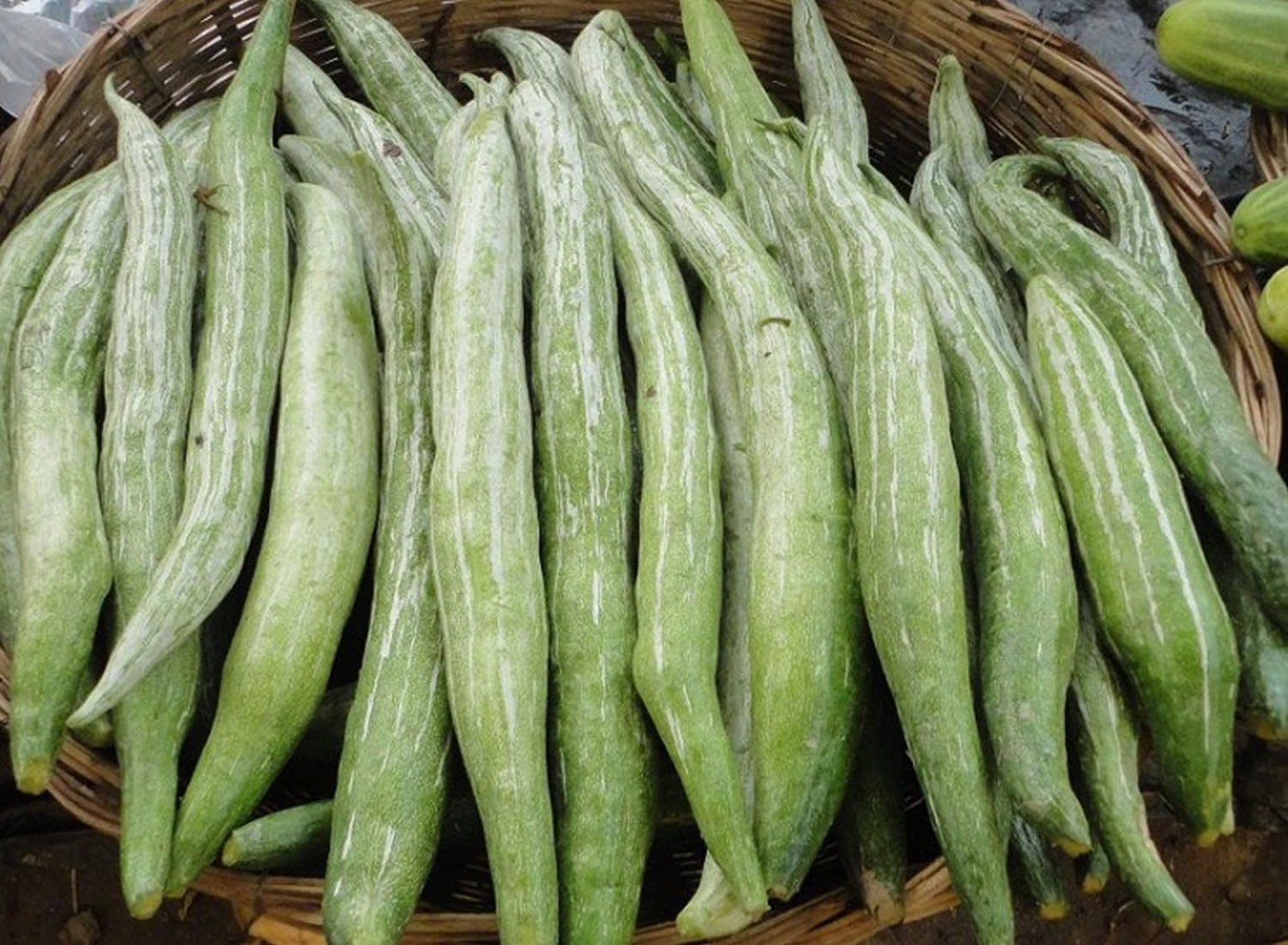
Snake gourd nutrition
Snake gourd is an annual climber belonging to the family Cucurbitaceae and commonly grown in Asian countries including Sri Lanka, India, Malaysia, Peninsula, and Philippines 12. The plant is a rich source of functional constituents other than its basic nutrients such as flavonoids, carotenoids, phenolic acids, and soluble and insoluble dietary fibers and essential minerals, which makes the plant pharmacologically and therapeutically active 13, 14. The plant contains proteins, fat, fiber, carbohydrates, minerals, and vitamins A and E in high levels. The predominant mineral elements are potassium (121.6 mg/100 g) and phosphorus (135 mg/100 g) and also sodium, magnesium, and zinc are found in fairly high amounts 15.
Snake gourd benefits
In Ayurveda and Siddha, the ancient medical system of India, the Snake gourd serves multiple purposes. Ingesting the fruit, leaves and flowers of the Snake gourd plant aided in digestive disorders, diabetes, skin diseases and general malaise. The root is used as a cure for bronchitis, headache and boils. Externally, the leaf juice is rubbed over the liver to relieve liver congestion. Both the root and fruit are considered to be cathartic. The fruit is used as an anthelmintic in French Guiana. The seeds are used for stomach disorders in Malabar Coast and is also considered antifebrile and anthelmintic. The aerial parts of Snake gourd are used along with other plant materials for indigestion, bilious fevers, boils, sores, skin eruptions such as urticaria, eczema, dermatitis, psoriasis diabetes and peptic ulcers 16. In traditional Chinese medicine, Snake gourd is used for the treatment of cerebrovascular and cardiovascular diseases due to its various pharmacological activities, such as dispelling phlegm to relieve cough and chest stuffiness 17. Snake gourd significant hypoglycemic, antioxidant, and immuno enhancing activities have been recently documented 18. The whole plant including root, fruit, leaf, and seed have medical properties. Snake gourd has anti-inflammatory activity and antidiabetic activity 19. In Sri Lanka, it is the aerial parts of Snake gourd that are used in the traditional medicinal system for treating disease conditions. Snake gourd is one of the major ingredients in several polyherbal preparations that are prescribed in Sri Lanka for the control of Diabetes Mellitus 20. In a study done by Arawwawala et al. 12, the hot water extract of aerial parts of Snake gourd was found to significantly reduce the blood glucose levels and improve the glucose tolerance of normoglycemic and STZ-induced diabetic rats. In addition to this, Arawwawala et al. have done several studies on Sri Lankan Snake gourd and have reported it to show antioxidant 21, anti-inflammatory 22, antimicrobial 23, and gastroprotective 24 properties.
The chemical constituents present in Snake gourd are cucurbitacin B, cucurbitacin E, isocucurbitacin B, 23, 24 -dihydroisocucurbitacin B, 23,24-dihydrocucurbitacin E, sterols 2 β-sitosterol, stigmasterol, α-carotene and β-carotene that are reported to have antioxidant activity 25.
It has been reported that Snake gourd fruit pulp has the antioxidant activity 26. The aerial parts of Snake gourd plant have both hepatoprotective 27 and gastroprotective 28 activities. Furthermore, Snake gourd has also been used in the treatment of headache, alopecia, fever, abdominal tumors, bilious, boils, acute colic, diarrhea, haematuria, and skin allergy 29. Snake gourd is used as an abortifacient (causing abortion), vermifuge (destroy parasitic worms medicine), refrigerant, purgative, malaria, laxative, hemagglutinant (clumping together of red blood cells), emetic, cathartic, bronchitis, and anthelmintic. However, currently there are no human studies to validate any of the above claims, mentioned benefits or uses for the medical conditions.
- Kolte RM, Bisan VV, Jangde CR, Bhalerao AA. Anti-inflammatory activity of root tubers of Trichosanthes cucumerina (Linn) in mouse’s hind paw oedema induced by carrageenin. Indian J Indigenous Med. 1997;18:117–121.[↩]
- Comparative evaluation of hypoglycaemic activity of some Indian medicinal plants in alloxan diabetic rats. Kar A, Choudhary BK, Bandyopadhyay NG. J Ethnopharmacol. 2003 Jan; 84(1):105-8. https://www.ncbi.nlm.nih.gov/pubmed/12499084/[↩]
- Hepatoprotective effect of Trichosanthes cucumerina Var cucumerina L. on carbon tetrachloride induced liver damage in rats. Sathesh Kumar S, Ravi Kumar B, Krishna Mohan G. J Ethnopharmacol. 2009 Jun 22; 123(2):347-50. https://www.ncbi.nlm.nih.gov/pubmed/19429383/[↩]
- Arawwawala M, Thabrew I, Arambewela LSR. Antidiabetic activity of Trichosanthes cucumerina in normal and streptozotocin – induced diabetic rats. Int J Biol Chem Sci. 2009;2:287–296.[↩]
- Arawwawala LDAM, Thabrew I, Arambewela LSR, Handunnetti S. Antiinflammatory activity of Trichosanthes cucumerina in rats. J Ethnopharmacol. 2010;131:538–543. doi: 10.1016/j.jep.2010.07.028.[↩]
- Arawwawala LDAM, Thabrew I, Arambewela LSR. In vitro and in vivo evaluation of antioxidant activity of Trichosanthes cucumerina aerial parts. Acta Biol Hung. 2011;62:235–243. doi: 10.1556/ABiol.62.2011.3.3.[↩]
- Arawwawala LDAM, Thabrew I, Arambewela LSR, Fernando N, Guruge LD. Antibacterial activity of Trichosanthes cucumerina Linn extracts. Int J Pharm Biol Arch. 2011;2:808–812.[↩]
- Arawwawala LDAM, Thabrew I, Arambewela LSR. Lipid lowering effect of hot water extract of Trichosanthes cucumerina Linn and antihyperglycemic activity of its fractions on streptozotocin- induced diabetic rats. Israel J Plant Sci. 2012;60:447–455.[↩]
- Shah SL, Mali VR, Zambare GN, Bodhankar SL. Cardioprotective activity of methanol extract of fruit of Trichosanthes cucumerina on doxorubicin-induced cardiotoxicity in Wistar rats. Toxicol Int. 2012;19:167–172. doi: 10.4103/0971-6580.97218. https://www.ncbi.nlm.nih.gov/pmc/articles/PMC3388762/[↩]
- Galani VJ, Goswami SS, Shah MB. Antiulcer activity of Trichosanthes cucumerina Linn against experimental-duodenal ulcers in rats. Oriental Pharm Exp Med. 2010;10:222–230. doi: 10.3742/OPEM.2010.10.3.222.[↩]
- Arawwawala LDAM, Thabrew I, Arambewela LSR. Gastroprotective activity of Trichosanthes cucumerina in rats. J Ethnopharmacol. 2010;127:750–754. doi: 10.1016/j.jep.2009.11.026.[↩]
- Arawwawala M., Thabrew I., Arambewela L. Antidiabetic activity of Trichosanthes cucumerina in normal and streptozotocin–induced diabetic rats. International Journal of Biological and Chemical Sciences. 2009;3(2):287–296.[↩][↩]
- Sandhya S., Vinod K. R., Sekhar J. C., Aradhana R., Nath V. S. An updated review on Tricosanthes cucumerina L. International Journal of Pharmaceutical Sciences Review and Research. 2010;1(2):56–60.[↩]
- Yusuf A. A., Folarin O. M., Bamiro F. O. Chemical composition and functional properties of snake gourd (Trichosanthes cucumerina) seed flour. The Nigerian Food Journal. 2007;25(1):36–45. doi: 10.4314/nifoj.v25i1.33652.[↩]
- Ojiako O. A., Igwe C. U. The nutritive, anti-nutritive and hepatotoxic properties of Trichosanthes anguina (snake tomato) fruits from Nigeria. Pakistan Journal of Nutrition. 2008;7(1):85–89. doi: 10.3923/pjn.2008.85.89.[↩]
- Jayaweera DMA. Medicinal plants (indigenous and exotic) used in Ceylon part 2. 1980. pp. 162–163.[↩]
- Xu Y., Chen G., Lu X., et al. Chemical constituents from Trichosanthes kirilowii Maxim. Biochemical Systematics and Ecology. 2012;43:114–116.[↩]
- Chen T., Zhang M., Li J., Surhio M. M., Li B., Ye M. Structural characterization and hypoglycemic activity of Trichosanthes peel polysaccharide. LWT-Food Science and Technology. 2016;70:55–62. doi: 10.1016/j.lwt.2016.02.024.[↩]
- Salvianolic acids prevent acute doxorubicin cardiotoxicity in mice through suppression of oxidative stress. Jiang B, Zhang L, Li M, Wu W, Yang M, Wang J, Guo DA. Food Chem Toxicol. 2008 May; 46(5):1510-5. https://www.ncbi.nlm.nih.gov/pubmed/18234414[↩]
- Arawwawala L. D. A. M., Thabrew M. I., Arambewela L. S. R. A review of the pharmacological properties of Trichosanthes cucumerina Linn of Sri Lankan origin. Unique Journal of Pharmaceutical and Biological Science. 2013;1(1):3–6.[↩]
- In vitro and in vivo evaluation of antioxidant activity of Trichosanthes cucumerina aerial parts. Arawwawala M, Thabrew I, Arambewela L. Acta Biol Hung. 2011 Sep; 62(3):235-43. https://www.ncbi.nlm.nih.gov/pubmed/21840826[↩]
- Anti-inflammatory activity of Trichosanthes cucumerina Linn. in rats. Arawwawala M, Thabrew I, Arambewela L, Handunnetti S. J Ethnopharmacol. 2010 Oct 5; 131(3):538-43. https://www.ncbi.nlm.nih.gov/pubmed/20654707/[↩]
- Arawwawala L. D. A. M. Antibacterial activity of Trichosanthes cucumerina Linn. extracts. International Journal of Pharmaceutical & Biological Archive. 2011;2;2.[↩]
- Gastroprotective activity of Trichosanthes cucumerina in rats. Arawwawala LD, Thabrew MI, Arambewela LS. J Ethnopharmacol. 2010 Feb 17; 127(3):750-4.[↩]
- Teow CC, Truong V, Mcfeeters RF, Thompson RL, Pecota KV, Yencho GC. Antioxidant activities, phenolic and β-carotene contents of sweet potato genotypes with varying flesh colours. Food Chem. 2007;103:829–38.[↩]
- Trichosanthes cucumerina Linn. improves glucose tolerance and tissue glycogen in non insulin dependent diabetes mellitus induced rats. Kirana H, Srinivasan BP. Indian J Pharmacol. 2008 Jun; 40(3):103-6. https://www.ncbi.nlm.nih.gov/pmc/articles/PMC2792599/[↩]
- Sathesh Kumar S, Ravi Kumar B, Krishna Mohan G. Hepatoprotective effect of Trichosanthes cucumerina Var cucumerina L.on carbon tetrachloride induced liver damage in rats. J Ethanopharmacol. 2009;123:347–50. https://www.ncbi.nlm.nih.gov/pubmed/19429383[↩]
- Lindley MG. The impact of food processing on antioxidants in vegetable oils, fruits and vegetables. Trend Food Sci Technol. 1998;9:336–40.[↩]
- Shah SL, Mali VR, Zambare GN, Bodhankar SL. Cardioprotective Activity of Methanol Extract of fruit of Trichosanthes cucumerina on Doxorubicin-induced Cardiotoxicity in Wistar Rats. Toxicology International. 2012;19(2):167-172. doi:10.4103/0971-6580.97218. https://www.ncbi.nlm.nih.gov/pmc/articles/PMC3388762/[↩]
